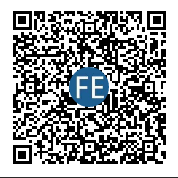bpmnjs的规则模块bpmnRules是继承diagram-js的基础上自己新增了很多规则组成;
我们首先来简单看一下这两个模块的基本内容,直接找到node_modules依赖文件路径:bpmn-js/lib/features/rules/BpmnRules.js与diagram-js/lib/features/rules/RuleProvider.js:
BpmnRules.js
import RuleProvider from 'diagram-js/lib/features/rules/RuleProvider';
export default function BpmnRules(eventBus) {
RuleProvider.call(this, eventBus);
}
inherits(BpmnRules, RuleProvider);
BpmnRules.$inject = [ 'eventBus' ];
BpmnRules.prototype.init = function() {
this.addRule('connection.start', 100, function(context) {
var source = context.source;
return canStartConnection(source);
});
.........
}
BpmnRules.prototype.canConnect = canConnect;
function canConnect(source, target, connection) {
..........
if (canConnectSequenceFlow(source, target)) {
return { type: 'bpmn:SequenceFlow' };
}
return false;
}
......
RuleProvider.js
export default function RuleProvider(eventBus) {
CommandInterceptor.call(this, eventBus);
this.init();
}
RuleProvider.$inject = [ 'eventBus' ];
inherits(RuleProvider, CommandInterceptor);
RuleProvider.prototype.addRule = function(actions, priority, fn) {
var self = this;
if (typeof actions === 'string') {
actions = [ actions ];
}
actions.forEach(function(action) {
self.canExecute(action, priority, function(context, action, event) {
return fn(context);
}, true);
});
};
从上面两个文件的部分内容可以知道,其实bpmnjs的bpmnRules模块已经写了不少规则,只需要使用diagram-js的addRule()方法就可以给对应的事件添加相应的校验规则,下面我们来自定义bpmnRules模块:
同样,自定义bpmnRules做法和其他模块自定义一样,前面已经说了自定义了Modeler以及部分模块的方法,还不会的同学可以先点这里了解
直接将BpmnRules.js文件拷出来,当作自己自定义的模块在custom/index.js里引入即可,这样可以在保留原有规则的基础上扩展自己的新规则:
import customBpmnRules from './BpmnRule.js';
export default {
__init__: [ 'bpmnRules' ],
bpmnRules: [ 'type', customBpmnRules ]
};
然后直接在上面的init方法里加上自己的规则即可:
BpmnRules.prototype.init = function(){
this.addRule('connection.end', 1000, function(context) {
var element = context.source;
if(element.id===xxx){
return false
}
......
});
}
已经很明了了吧,根据对象属性或者模块参数进行校验,返回true则通过,false则禁止;
好了,自定义规则的内容讲到这,下一篇讲讲同方向禁止重复连线的规则的方法;
引导:
关于bpmnjs+vue的更多篇章,小编已经全部整理在这里:
bpmnjs+vue中文文档API常见方法使用总结


